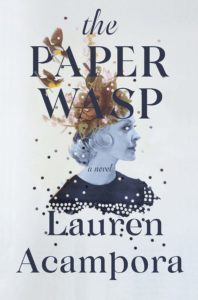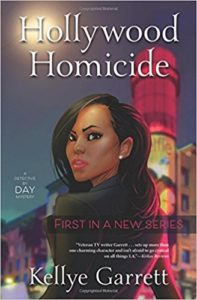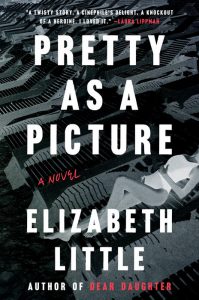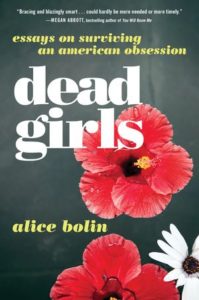The love affair between thriller novels and Hollywood is very old, but I first discovered it in The Egypt Game. Zilpha Keatley Snider’s 1967 children’s book follows April, an eleven-year-old girl living with her grandmother while her aspiring-actress mother is off aspiring somewhere. At first, April imitates her absent mother’s glamour, wearing false eyelashes and piling her hair so impossibly high on her head she can’t really move her neck.
But through the friendship of Melanie, who lives across the hall, April abandons the starlet persona. Soon Melanie and April are sneaking into a vacant lot, taking it over, creating the complicated role-playing game of the title, and eventually coming out on top in a confrontation with the neighborhood child-killer. In other words, April starts out the book as the classic crime thriller victim—an aspiring white girl starlet—and instead becomes, with Melanie, creative forces, storytellers, co-directors of their own imaginary “Egypt.” April could have been a dead girl; instead I like to think of her as a young filmmaker.
For recent generations of crime novelists, literary thriller writers, horror writers, and other feminist fans of historically misogynist-tinged genres, writing about filmmakers and other behind-the-scenes players has been a way of subverting the usual stories these genres like to tell. Here are seven thrillers that go behind the camera to expose what the art and craft of filmmaking reveal about how we all think of ourselves and our life stories:
The Paper Wasp by Lauren Acampora
Acampora has said she intended to write this novel as a purely commercial lark, but this delicious, Lynchian novel runs circles around commercial expectations. Abby, a visual artist in her late twenties who still lives in her parents’ house, announces herself as an unreliable narrator almost from the beginning. By the time she flies across the country to track down her childhood best friend, now a famous Hollywood actor, the reader feels very nervous about what Abby is going to do. What Abby actually does is totally unexpected. The young man who makes serious, social justice-minded documentary films offers Abby one version of filmmaking (and of settling down), but Abby’s real inspiration is the mythical reclusive auteur August Perren, who inspires her machinations up to a shocking, exacting, and deeply unsettling heist ending.
The Song is You by Megan Abbott
The earliest books in Abbott’s renowned oeuvre are accomplished, twisty L.A. noirs that dangle the noir tradition off a fire escape by the heels. The Song is You, her second novel, is a subversive gutting of the starlet “dead girl” trope. Abbott’s gumshoe, Hop, is a former tabloid journalist turned publicist who is only barely troubled by his own self-serving lack of empathy, especially for the women whose public images and lives he is supposed to control (on behalf of his own studio bosses). The novel starts two years after Hop helped brush something under the rug—the disappearance of Jean Spangler (a real-life true-crime mystery), a night when Hop was nearby; the appearance of another bystander, Iolene, gives Hop a task of covering up almost as much as he uncovers. The mystery is dark and intelligent, whizzing through a version of old Hollywood’s underbelly that almost seems familiar to noir fans—but which spotlights the cracks in that old story. For Abbott fans who haven’t gone back to the beginning, don’t wait.
Stormy Weather by Paula L. Woods
Woods won an Edgar nomination for her first novel, Inner City Blues, which introduced detective Charlotte Justice—an LAPD detective and the only Black woman in her department, investigating a murder in the wake of the Rodney King video. In this sequel, a legendary Black filmmaker and community activist, Maynard Duncan, has been killed, and his murder might be connected to an already-jailed serial killer, who targeted patients in nursing homes. Justice’s family is a tight-knit group of cinephiles that host monthly “Family Movie Nights” and whose members include a famed makeup entrepreneur and a former extra in Tarzan; their stories of old Hollywood racism parallel Justice’s daily navigation of sexism, racism, and harassment in the LAPD. The mystery is complex and expertly plotted, and the book’s critical portrait of the department is especially relevant to current conversations about rampant police abuse.
Night Film by Marisha Pessl
The filmmaker in Pessl’s second novel is a reclusive horror auteur, Cordova, whose later films are nearly as mythic as the Hitler porn at the heart of Running Dog. Cordova’s work is so beloved, fans devote their lives (literally) to his work. The book unfolds like a detective story, following a journalist who sets out to investigate the mysterious death of Cordova’s daughter for his own redemption. It’s hard to describe without giving away too much, as the book zips through a parade of dream-like settings, fever dreams, and incredibly vivid and creative twists; it’s propulsive and satisfyingly creepy, and Pessl boldly intersperses found documents to complicate the story. I also learned the word “oubliette” from this novel, which is something I’ll be forever grateful for.
Innocents and Others, by Dana Spiotta
I adored Bobby DeSoto, a radical filmmaker and member of the Weather Underground who goes into hiding after a political bombing in Spiotta’s novel Eat the Document. I felt more complicated feelings for Meadow, the experimental filmmaker in Innocents and Others; as a teenager, Meadow tracked down and shacked up with a much-older renowned filmmaker (Orson Welles?), a secret experience she is only recounting much later, in an online essay. Spiotta braids Meadow’s story together with that of her old friend Carrie, who now makes commercially popular movies, and that of Jelly—a self-conscious woman whose hobby is cold-calling Hollywood executives and producers and seducing them into ongoing, phone-only relationships. The book is a compelling meditation on the lines between commerce and art, with important things to say about how we shape and package our selves and personal experiences for public consumption.
Hollywood Homicide by Kellye Garrett
This effervescent and hilarious whodunnit follows Dayna, a recently “semi-retired” actor who earned just enough fame as the star of a fast-food commercial that strangers recognize her (although often, unable to place her, they mistake her for the only Black girl they knew in high school). Having spent all of her commercial money trying to help save her parents’ house from foreclosure, Dayna—so broke she keeps running out of gas—sees a billboard offering a $15,000 reward for tips about a hit-and-run, and realizes she witnessed the crime. This send-up of the superficiality of Hollywood is more Clueless than Black Dahlia, which is a lot of fun (one of Dayna’s friends is ecstatic to have been nominated “Hussy of the Week” by a gossip blog, then crushed when she loses the award to something calls Dopey Cat). Garrett is a former TV writer, and it shows in her snappy dialogue and laugh-out-loud one-liners.
Pretty as a Picture, by Elizabeth Little
Little’s novel gives us an industry narrator I haven’t seen before—the film editor. Marissa is a talented editor who has primarily worked with her best friend Amy, a celebrated filmmaker, but as Amy’s boyfriend comes between them, Marissa branches out desperately on her own. She takes a mysterious job for a celebrated-but-demanding director and is whisked away to work on-location, on an Atlantic beach vacation island, where the unsolved murder of a young woman—the true crime subject of the film Marissa is supposed to cut—is still painful and fresh on everyone’s mind. The crackling writing is well-observed, and especially insightful because of Marissa’s encyclopedic knowledge of movies; as she gets closer to the mystery of the dead girl, she parses every person’s facial expression and most of her interactions based on what it would mean in a movie.
Dead Girls, by Alice Bolin
Okay, this is not a thriller, but it’s such a perfect companion piece to all of the previous books, you have to read it: Bolin first wrote her “theory of the dead girl” about the TV shows Twin Peaks (a progenitor of the trope) and True Detective (the trope’s nadir). This collection of cultural and personal essays examines the racism and sexism of so many crime, thriller, and horror works that feed off of “dead girls,” while also offering a loving and clear-eyed analysis of the works that subvert those forms. Interspersed are Bolin’s reflections on her own life as a newcomer to a Los Angeles that is obsessed with and shaped by its movies and books.
***


























